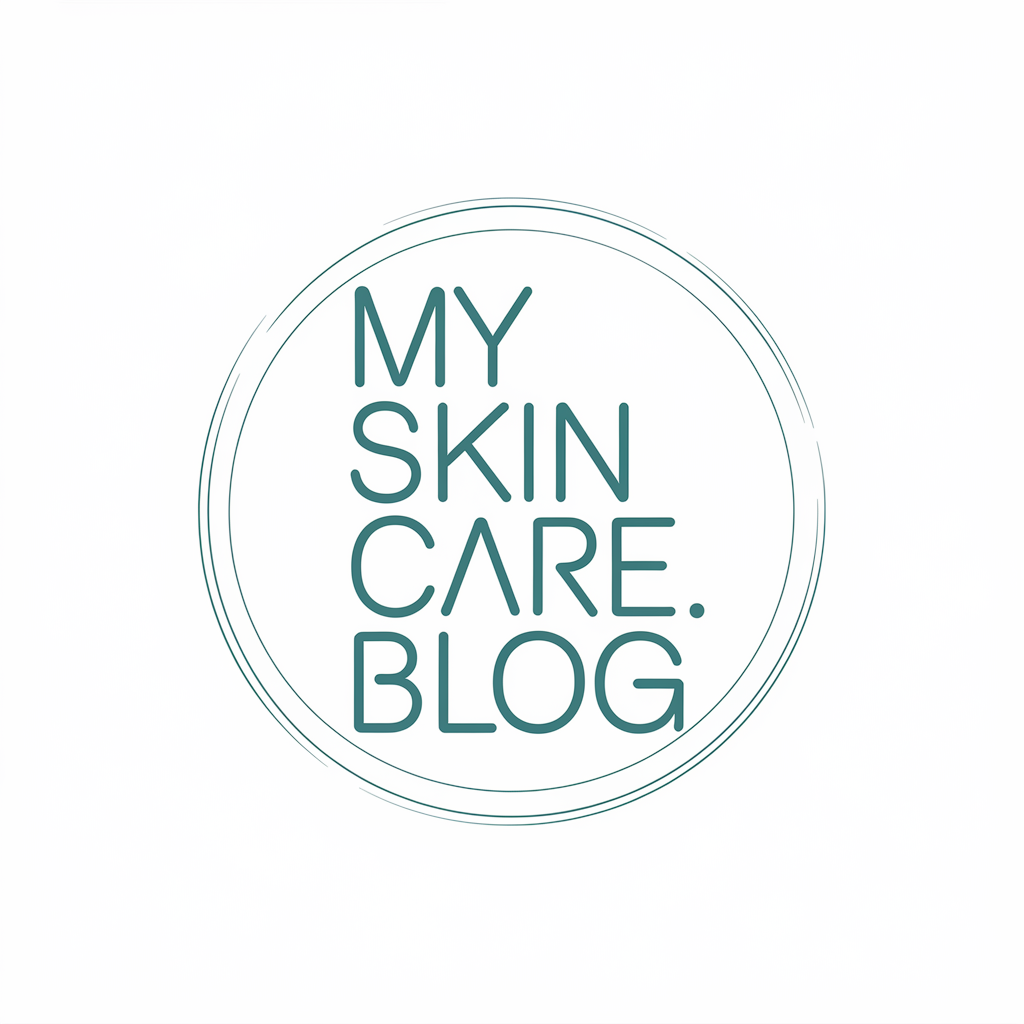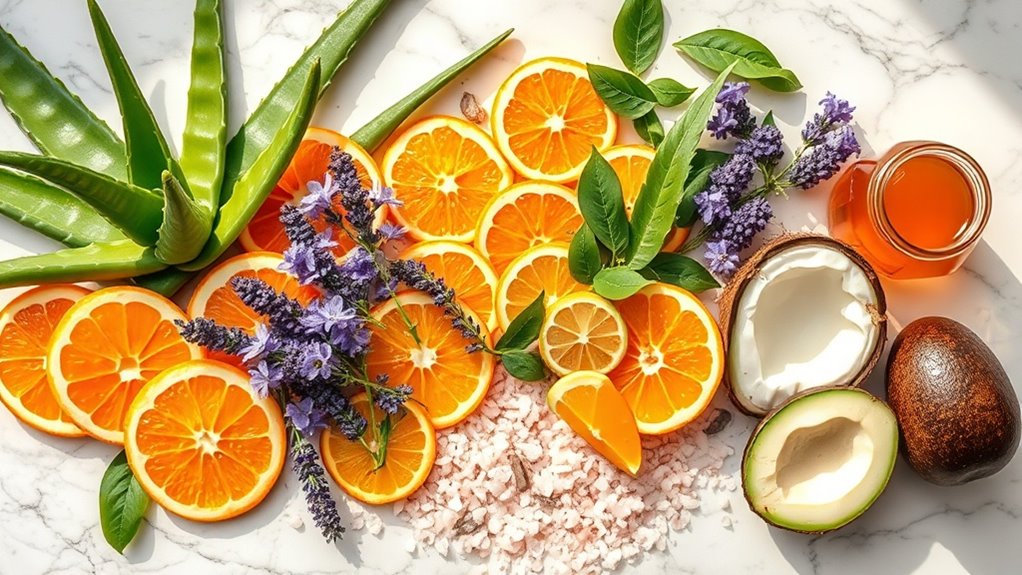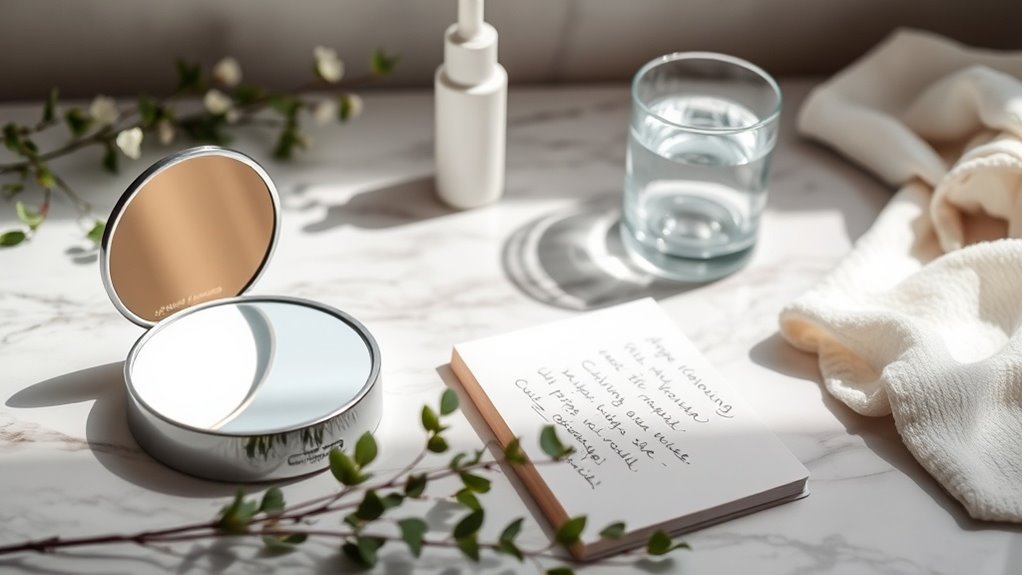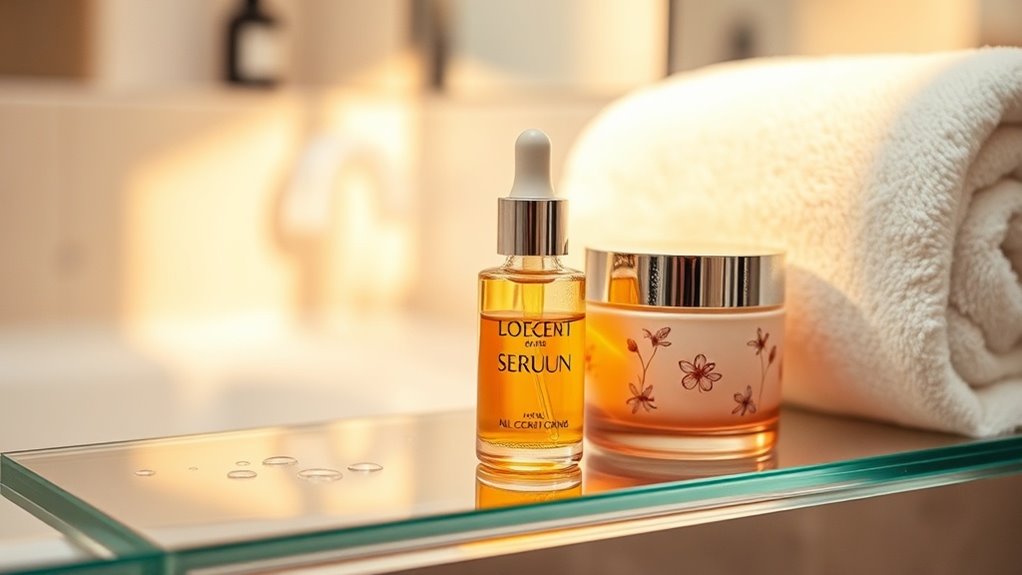5 Signs You’re Using the Wrong Products for Your Skin Type
You’re experiencing persistent breakouts from comedogenic ingredients that block pores and fuel acne by up to 50%. Excessive dryness arises when harsh elements like alcohol strip moisture, increasing water loss by 40% and causing flakiness. Unwanted oiliness stems from heavy occlusives boosting sebum by 30%. Skin irritation and redness often result from irritants affecting 40% of users. If you see no improvements, your products might not penetrate effectively—uncover tailored solutions to refine your routine.
Key Takeaways
- Persistent breakouts and acne may signal you’re using comedogenic products that clog pores.
- Excessive dryness or flakiness indicates your products are stripping essential moisture from your skin.
- Unwanted oiliness and shine suggest your products are overstimulating sebum production.
- Skin irritation and redness mean harsh ingredients are compromising your skin barrier.
- No noticeable improvements in skin condition imply your products are ineffective for your skin type.
Persistent Breakouts and Acne
If you’re experiencing persistent breakouts and acne, it could signal that your skin products are mismatched for your needs.
Wrong skincare often involves ingredients that clog pores or disrupt your skin’s barrier, as evidenced by dermatological studies showing comedogenic substances like mineral oil increase inflammation.
You might notice bacteria thriving in trapped oil, exacerbating acne lesions.
To address this, choose evidence-based options; for example, opt for non-comedogenic formulas that reduce pore blockage, based on clinical trials demonstrating up to 50% fewer breakouts when products match your skin type. Incorporating salicylic acid into your routine can effectively exfoliate dead skin cells and clear pores, as supported by its proven benefits in acne management.
Monitor changes closely for better results.
Moreover, recognizing and adjusting everyday habits that exacerbate acne can lead to clearer skin by addressing overlooked triggers.
Excessive Dryness or Flakiness
Excessive dryness or flakiness signals that your skin products might be stripping essential moisture, as harsh ingredients like alcohol-based formulas disrupt the skin’s barrier, according to dermatological research showing a 40% increase in transepidermal water loss. You might notice symptoms like tightness or itchiness, which studies link to impaired barrier function. To address this, choose products that restore hydration.
| Sign of Dryness | Evidence-Based Solution |
|---|---|
| Tightness | Use humectants like hyaluronic acid |
| Flakiness | Opt for ceramide-rich moisturizers |
| Itchiness | Choose gentle, sulfate-free cleansers |
| Redness | Apply barrier-repairing emollients |
| Rough texture | Incorporate antioxidants for protection |
This approach, backed by clinical trials, helps maintain your skin’s moisture balance. Over-exfoliation can worsen these issues by damaging the protective barrier, as highlighted in expert recommendations. For enhanced all-day hydration, consider layering techniques to effectively combine products and time applications.
Unwanted Oiliness and Shine
Unwanted oiliness and shine often indicate that your skin products are overstimulating sebum production, as studies show certain ingredients like heavy occlusives can clog pores and trigger a 30% increase in oil output. When selecting products, always consider your skin type to ensure they align with your specific needs and budget constraints.
You’re likely using heavy creams or oils that disrupt your skin’s balance, leading to a greasy appearance and potential breakouts.
Evidence from dermatological research highlights that switching to lightweight, oil-free alternatives can reduce sebum by up to 25%, as confirmed in clinical trials.
Opt for non-comedogenic options to maintain your skin’s equilibrium without overloading it, based on peer-reviewed findings.
Monitor changes closely for optimal results.
For better results, incorporate a step-by-step routine tailored for oily skin types to control excess sebum effectively.
Skin Irritation and Redness
Skin irritation and redness can signal that your skin’s barrier is compromised by harsh ingredients in your products, as research indicates that irritants like alcohol or fragrances trigger inflammation in up to 40% of users.
If you’re noticing burning or itching, it could stem from preservatives such as parabens, which studies in the Journal of Investigative Dermatology link to increased sensitivity in sensitive skin types.
You might also react to synthetic dyes, as clinical trials show they exacerbate barrier damage.
To mitigate this, opt for hypoallergenic formulas backed by evidence, and consult a dermatologist for personalized advice based on robust data.
Furthermore, avoiding skincare missteps like over-exfoliating can prevent further aggravation of sensitive skin.
Additionally, educating yourself on toxic ingredients in skincare can empower you to choose safer alternatives for your routine.
No Noticeable Improvements in Skin Condition
If you’re using products without seeing any changes in your skin’s condition, it often means they’re not formulated to address your specific needs, as studies in the Journal of the American Academy of Dermatology reveal that ineffective ingredients fail to penetrate the skin barrier in up to 60% of cases.
You might overlook key issues like hydration deficits or barrier dysfunction, where research shows targeted actives, such as ceramides or retinoids, improve outcomes in 70% of users when matched correctly.
Consult a dermatologist to identify your skin type and select evidence-based formulations that deliver measurable results.
Additionally, recognizing common skincare mistakes can exacerbate skin issues if not addressed through proper education and adjustments.
Moreover, falling for expensive toners can lead to unnecessary spending without benefits, as experts recommend focusing on proven alternatives over trendy, overpriced options.





